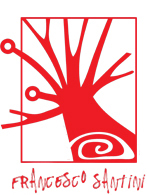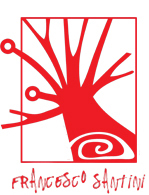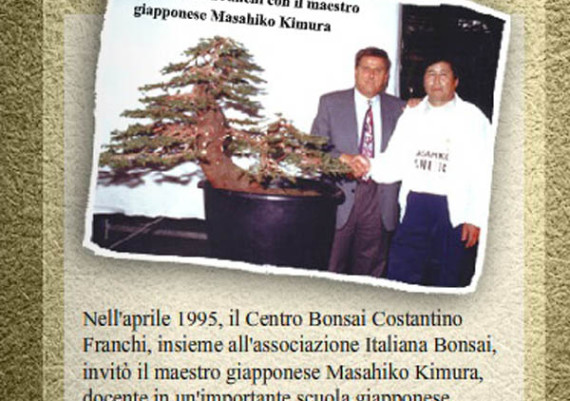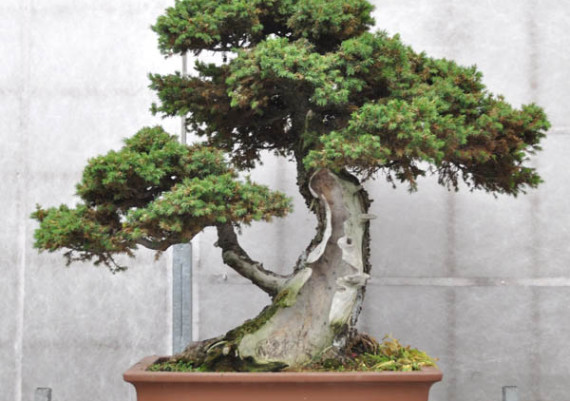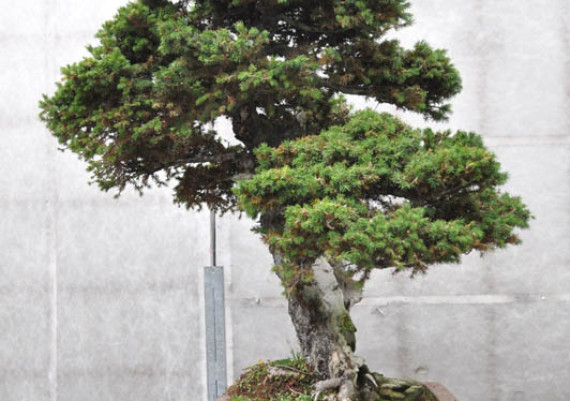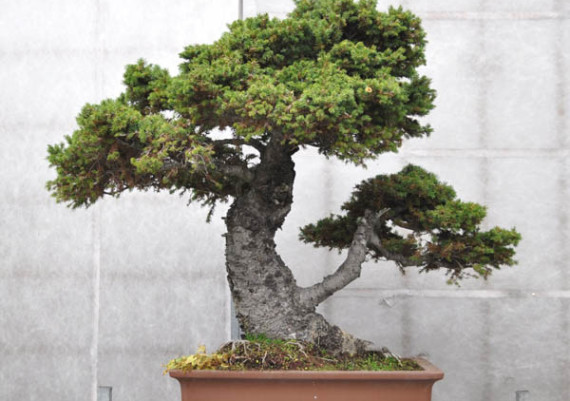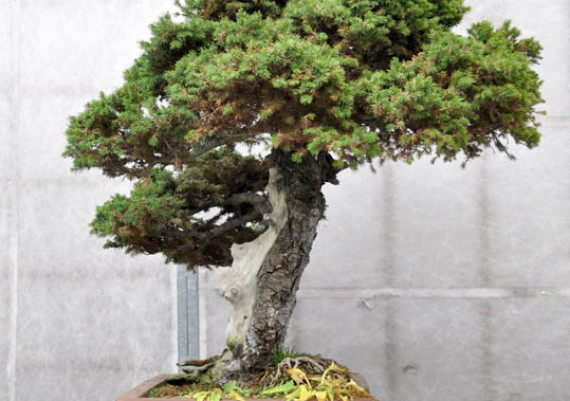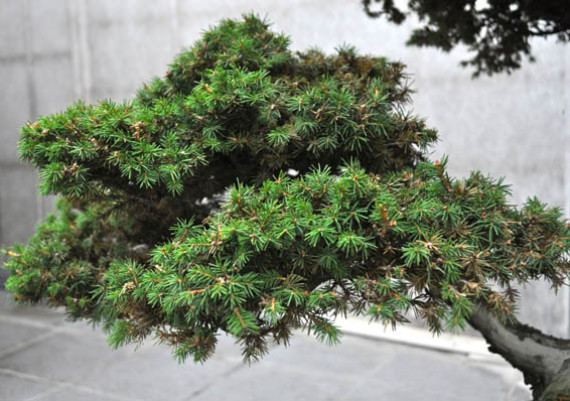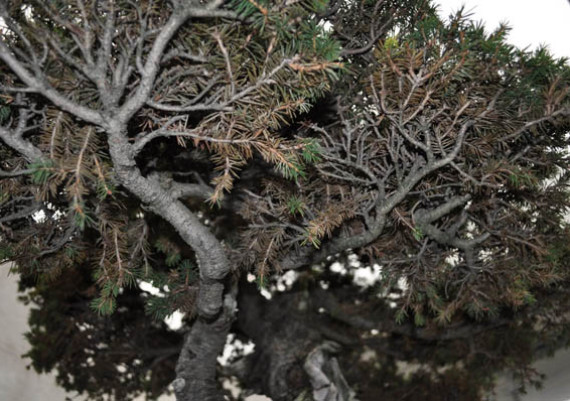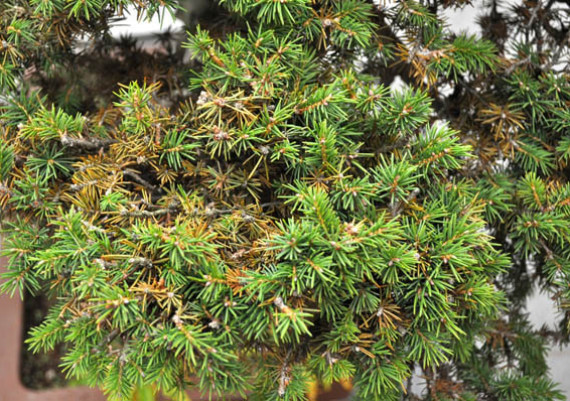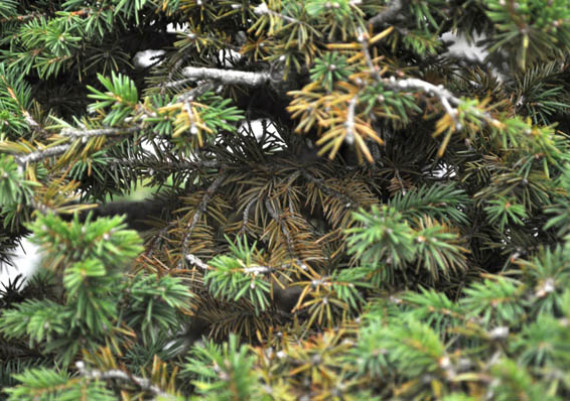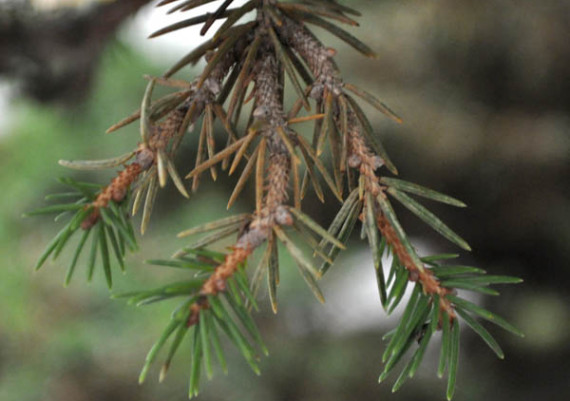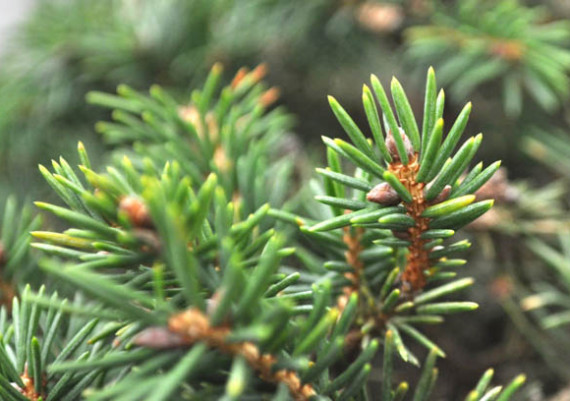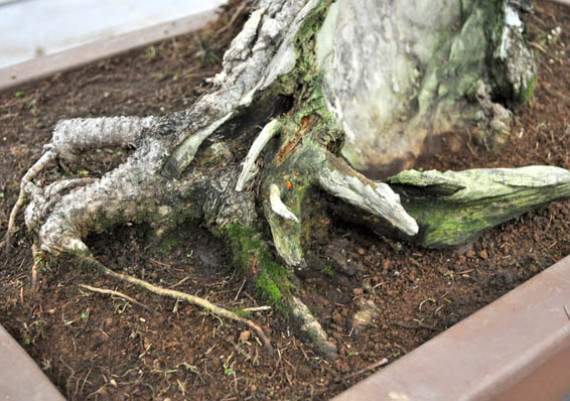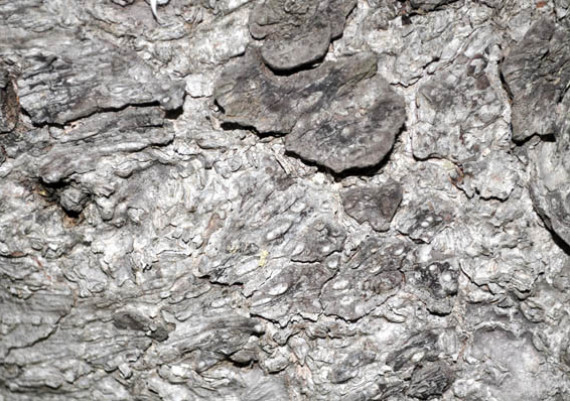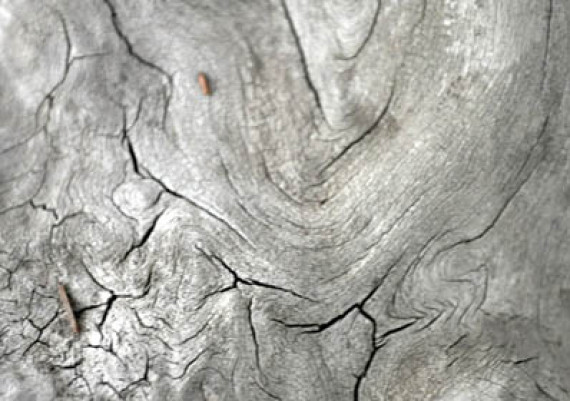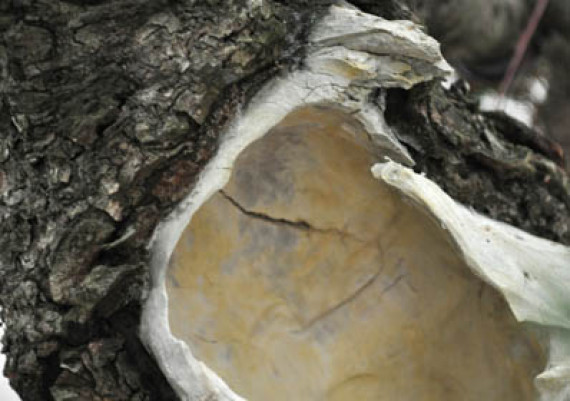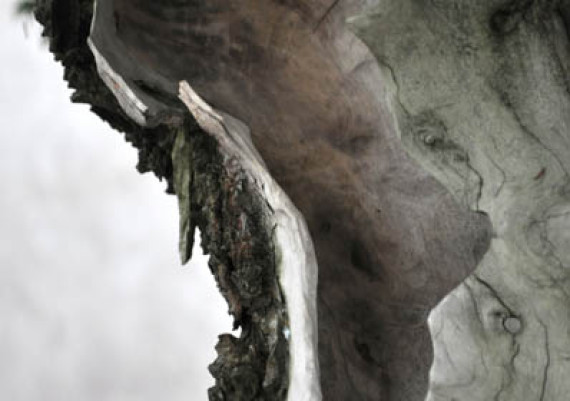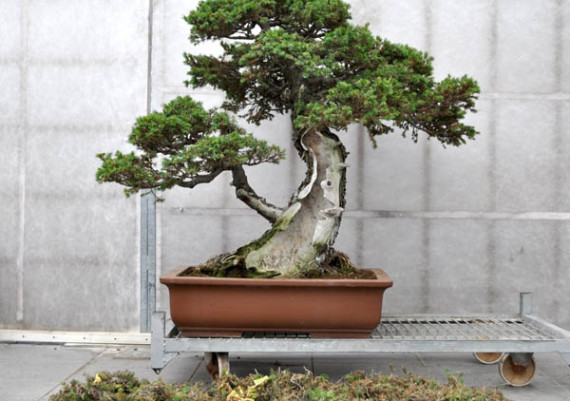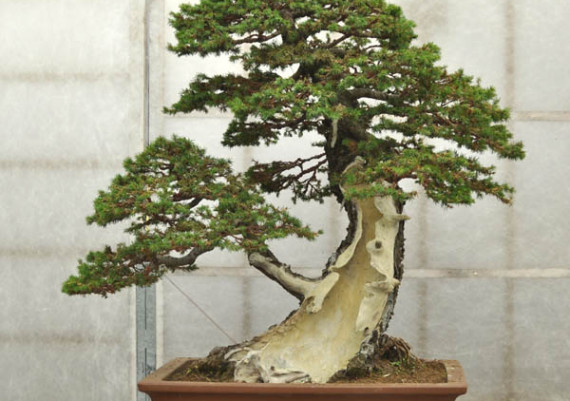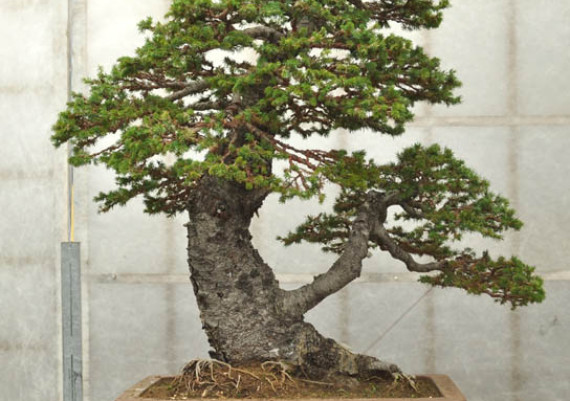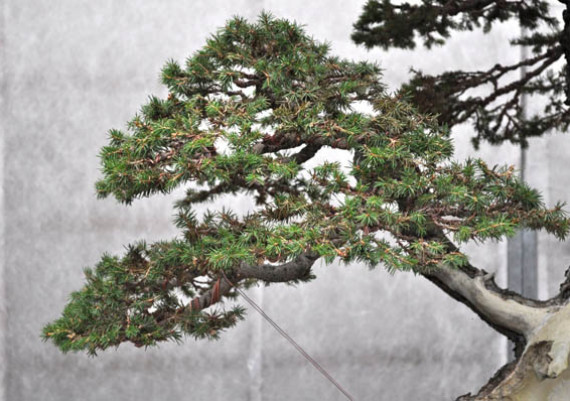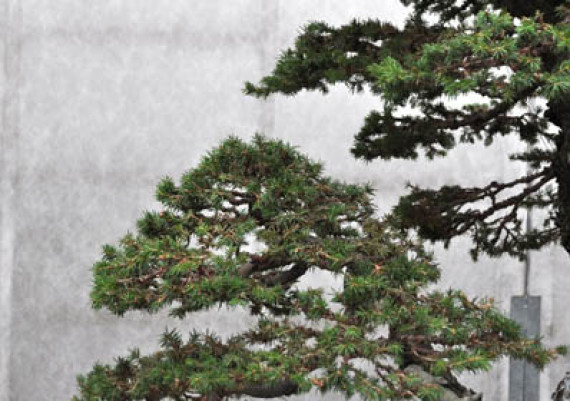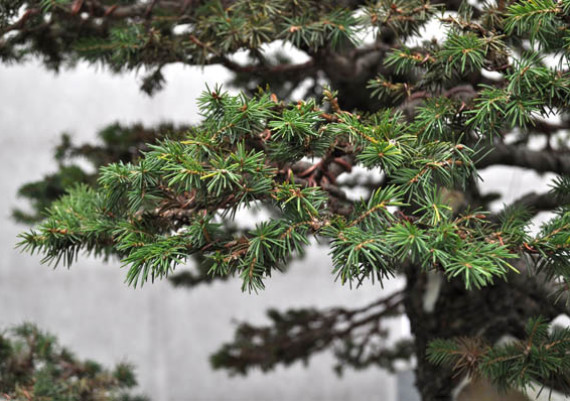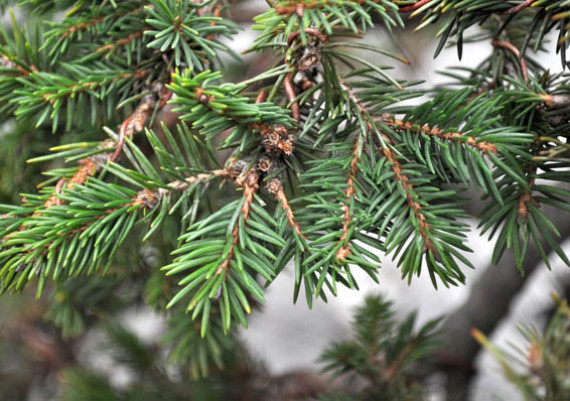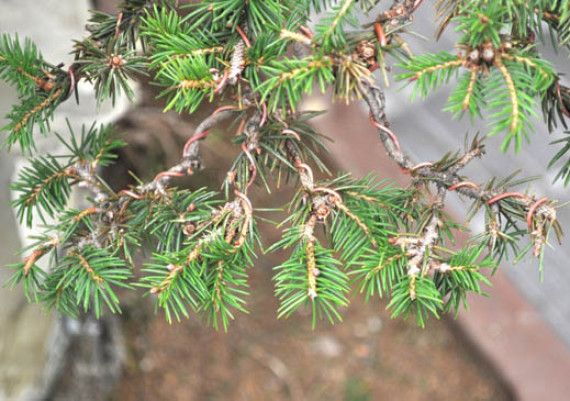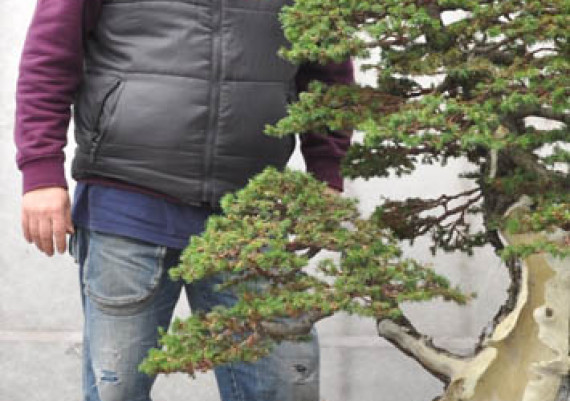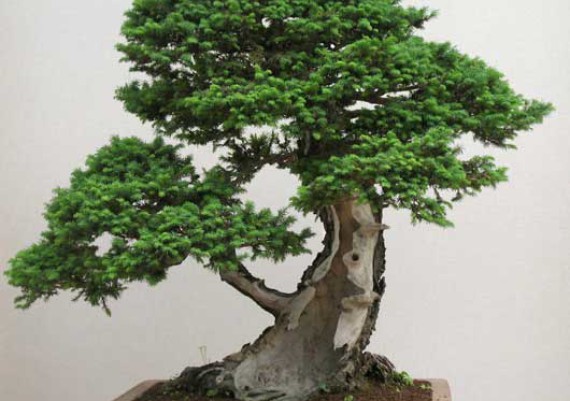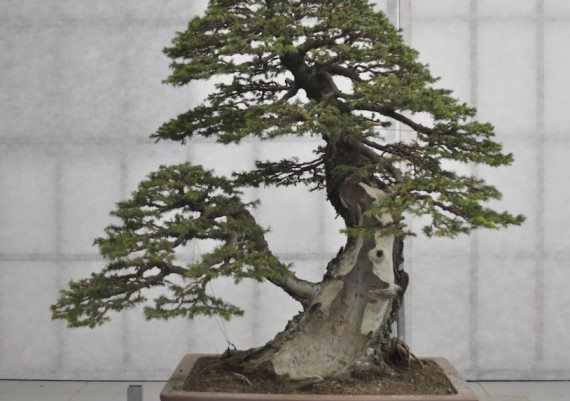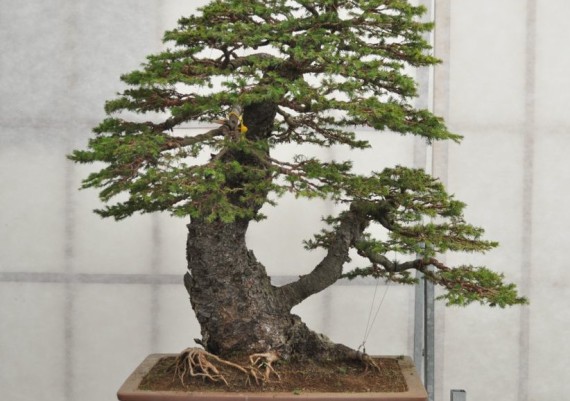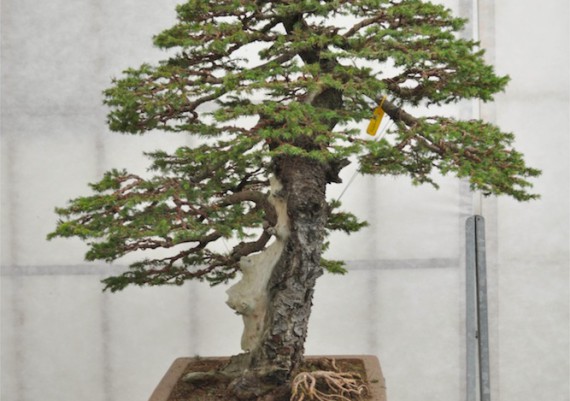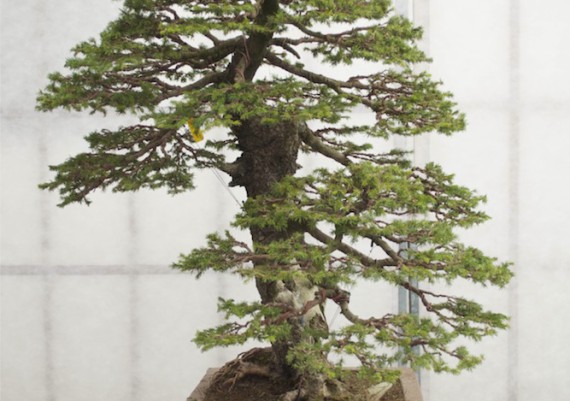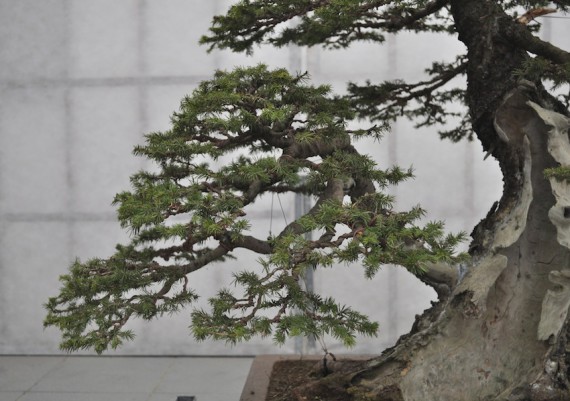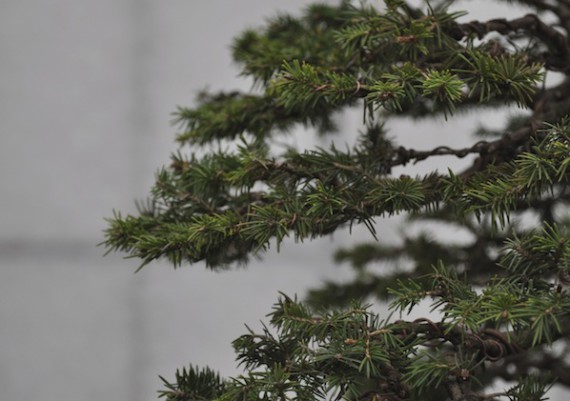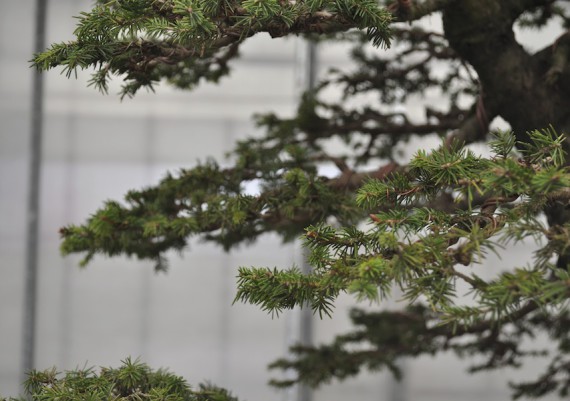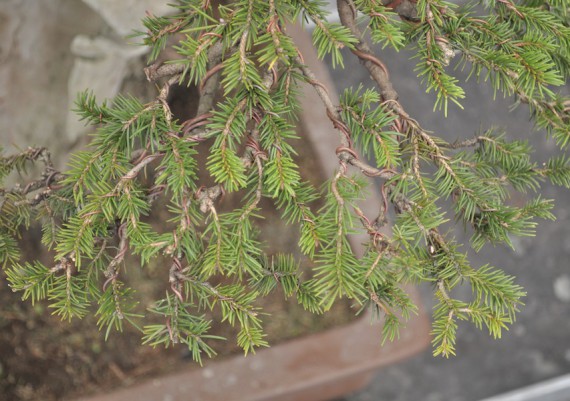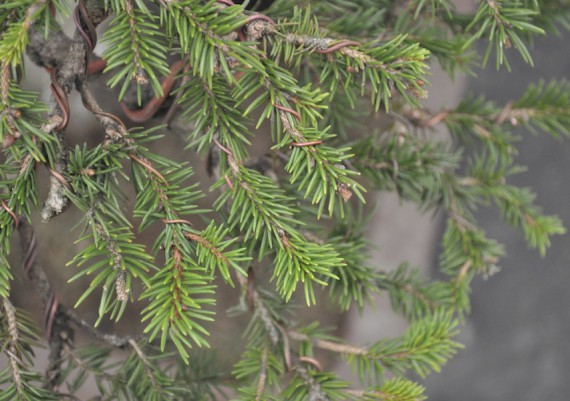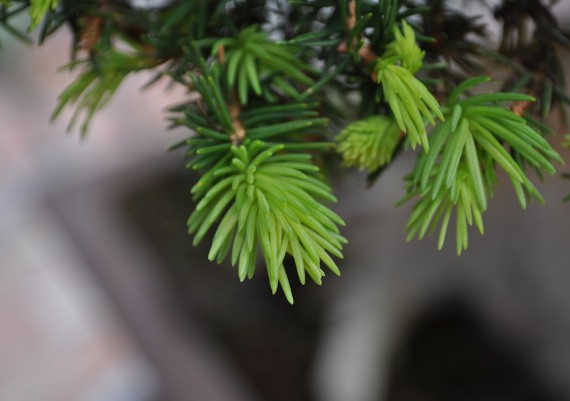Lavorazione abete rosso
SPRUCE
(Courtesy of Franchi Bonsai – private collection)
The story of this spruce is truly noteworthy. It began over 20 years ago, here at the Costantino Franchi Museum. Indeed, in 1995, Master Kimura held a demo with this spruce. All local bonsai enthusiasts still remember that amazing event: his workmanship and the pure artistic characters of his outline was flawless and essential.
Since then, this spruce bonsai is displayed at the Franchi Museum along with other masterpieces.
The bonsai has grown and aged beautifully, while the front was also changed. An important intervention was the restoration of the trunk, which was found to be rotten inside. For this reason, it was necessary to remove the rotten wood with a milling machine. The trunk, once emptied of its inner part, is now completely hollow up to half the height of the plant.
Regular pinching over the years fostered vegetation thickening but, as a consequence, the thickened branches now limit the flow of air and light. The natural outcome was a lengthening of the vegetation outwards and upwards, causing the weakening and eventual death of many inner areas of the tree that could no longer receive enough light and air.
We are in December 2009... My work starts here.
It was a privilege for me to have the possibility to pick up the baton in taking care of such a majestic and important tree. Knowing that master Kimura worked on this bonsai was for me a source of pride and profound respect.
After the usual consultation with Lorenzo Agnoletti, it’s time for action!
The first step was the selection of vegetation: I removed all dry and weak branches,leaving the healthy parts only. It was a long job, though not too demanding. Allowing the strong branches only to grow, we obtained a tree in a healthy shape. In addition, by eliminating all the useless and weak parts we achieved a substantial thinning of the foliage.
Once the foliage is thinned, it was necessary to replace the apex, and take some time to observe the tree and select which branches did not fit with the design and needed to be removed.
After a few hours, a substantial pile of branches laid on the ground: their colour itself witnessed the poor health of the removed vegetation.
Although a more extensive pruning would have been suitable, I choose to keep as much vegetation as possible, in order to allow the spruce to recover faster.
The restoration of the wood was another important intervention. There were still small areas of decomposed spongy wood at the base, which had to be removed by scratching it carefully with a gouge. The inevitable small residue of decomposed wood was then removed using fire. At this point I treated all the dry wood with a generous application of jin liquid.
It was time to move on to the foliage and to wire all the remaining branches.
Wiring the spruce with the annealed copper wire was the most time-consuming work: it took several days to finish. I avoided to use thick wire as far as possible, and turned to guy wire to lower the primary branch. I mostly used 0.8mm to 2 mm wire.
The work had to be meticulous and it took time: there was a large number of branches and it was essential to pay attention not to compromise the needles when passing the wire.
After the long time dedicated to these preparatory operations, it came the moment of shaping the tree, definitely the favourite part of my job!
This is when the ideas really take shape ... and the tree as well!
Wiring is crucial: it is not a matter of aesthetics per se, because in bonsai beauty goes hand in hand with function. You really want to distribute the branches so that each one of them is properly exposed to light and air in order to maximise the nurturing contribution of these elements.
For this purpose, you have to bend and reposition the branches radially, like the fingers of an open hand! This is the first step that allows you to figure out the size and position of the main branches. Through wiring you are also able to continuously refine and see through your design.
This is when the bonsai curator’s eye must grasp the main elements of correct shaping. The spaces between the branches, their depth, the asymmetries and all the aesthetic principles that lie behind a beautiful work.
Making my eye and my hand work in synergy, I correct and modify each branch until everything is consistent with the design I had in mind.
Eventually, after a long talk and in agreement with Lorenzo, is was decided to remove the first branch on the left. That branch made the tree too heavy as a whole, and unbalanced on the left side. A jin was the solution!
I wish to underline that the shaping was not aiming at obtaining the optimal result, as its primary goal was providing the tree with the best conditions for its recover and growth. For this reason, we kept more branches than it would have been necessary if we had pursued a pure aesthetic approach.
When the tree have fully recovered, I shall further select the branching in order to make the bonsai more intelligible and defined, but this will be a further stage of work.
I wish to thank Lorenzo for his advice and support, and Ms. Nara Franchi for giving me the opportunity to work on a bonsai with such an important story.
(Courtesy of Franchi Bonsai – private collection)
The story of this spruce is truly noteworthy. It began over 20 years ago, here at the Costantino Franchi Museum. Indeed, in 1995, Master Kimura held a demo with this spruce. All local bonsai enthusiasts still remember that amazing event: his workmanship and the pure artistic characters of his outline was flawless and essential.
Since then, this spruce bonsai is displayed at the Franchi Museum along with other masterpieces.
The bonsai has grown and aged beautifully, while the front was also changed. An important intervention was the restoration of the trunk, which was found to be rotten inside. For this reason, it was necessary to remove the rotten wood with a milling machine. The trunk, once emptied of its inner part, is now completely hollow up to half the height of the plant.
Regular pinching over the years fostered vegetation thickening but, as a consequence, the thickened branches now limit the flow of air and light. The natural outcome was a lengthening of the vegetation outwards and upwards, causing the weakening and eventual death of many inner areas of the tree that could no longer receive enough light and air.
We are in December 2009... My work starts here.
It was a privilege for me to have the possibility to pick up the baton in taking care of such a majestic and important tree. Knowing that master Kimura worked on this bonsai was for me a source of pride and profound respect.
After the usual consultation with Lorenzo Agnoletti, it’s time for action!
The first step was the selection of vegetation: I removed all dry and weak branches,leaving the healthy parts only. It was a long job, though not too demanding. Allowing the strong branches only to grow, we obtained a tree in a healthy shape. In addition, by eliminating all the useless and weak parts we achieved a substantial thinning of the foliage.
Once the foliage is thinned, it was necessary to replace the apex, and take some time to observe the tree and select which branches did not fit with the design and needed to be removed.
After a few hours, a substantial pile of branches laid on the ground: their colour itself witnessed the poor health of the removed vegetation.
Although a more extensive pruning would have been suitable, I choose to keep as much vegetation as possible, in order to allow the spruce to recover faster.
The restoration of the wood was another important intervention. There were still small areas of decomposed spongy wood at the base, which had to be removed by scratching it carefully with a gouge. The inevitable small residue of decomposed wood was then removed using fire. At this point I treated all the dry wood with a generous application of jin liquid.
It was time to move on to the foliage and to wire all the remaining branches.
Wiring the spruce with the annealed copper wire was the most time-consuming work: it took several days to finish. I avoided to use thick wire as far as possible, and turned to guy wire to lower the primary branch. I mostly used 0.8mm to 2 mm wire.
The work had to be meticulous and it took time: there was a large number of branches and it was essential to pay attention not to compromise the needles when passing the wire.
After the long time dedicated to these preparatory operations, it came the moment of shaping the tree, definitely the favourite part of my job!
This is when the ideas really take shape ... and the tree as well!
Wiring is crucial: it is not a matter of aesthetics per se, because in bonsai beauty goes hand in hand with function. You really want to distribute the branches so that each one of them is properly exposed to light and air in order to maximise the nurturing contribution of these elements.
For this purpose, you have to bend and reposition the branches radially, like the fingers of an open hand! This is the first step that allows you to figure out the size and position of the main branches. Through wiring you are also able to continuously refine and see through your design.
This is when the bonsai curator’s eye must grasp the main elements of correct shaping. The spaces between the branches, their depth, the asymmetries and all the aesthetic principles that lie behind a beautiful work.
Making my eye and my hand work in synergy, I correct and modify each branch until everything is consistent with the design I had in mind.
Eventually, after a long talk and in agreement with Lorenzo, is was decided to remove the first branch on the left. That branch made the tree too heavy as a whole, and unbalanced on the left side. A jin was the solution!
I wish to underline that the shaping was not aiming at obtaining the optimal result, as its primary goal was providing the tree with the best conditions for its recover and growth. For this reason, we kept more branches than it would have been necessary if we had pursued a pure aesthetic approach.
When the tree have fully recovered, I shall further select the branching in order to make the bonsai more intelligible and defined, but this will be a further stage of work.
I wish to thank Lorenzo for his advice and support, and Ms. Nara Franchi for giving me the opportunity to work on a bonsai with such an important story.
